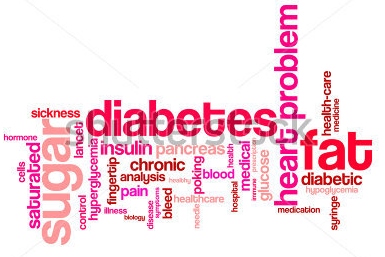This article was originally written for and published by Awat Newspaper.
In my last article about obesity I highlighted that the biggest co-morbidity known to obesity is type II diabetes. Diabetes is a metabolic disease where suffers have higher than normal blood sugar, which occurs for one of two reasons; either because the pancreas doesn’t produce enough insulin or because the specific cells don’t respond to the insulin produced. There are also two types of diabetes, commonly known as Type I and II diabetes. Type I diabetes is characterised as the loss of insulin producing beta cells in the pancreas. There is no known preventive measure against type I diabetes and those affected are otherwise healthy and of a healthy weight when onset occurs. Sensitivity and responsiveness to insulin are usually normal, especially in the early stages. Type 1 diabetes can affect children or adults, but was traditionally termed “juvenile diabetes” because a majority of these diabetes cases were in children. Type II diabetes, on the other hand, is characterised as insulin resistance and usually occurs due to excess weight, bad dietary habits and decrease in physical activity. Unlike type I diabetes, type II diabetes is reversible and can be cured through lifestyle changes or medication in severe cases.
In September 2012 the World Health Organisation stated that 347 million people worldwide have diabetes and more than 80% of diabetes deaths occur in low- and middle-income countries. In 2004, an estimated 3.4 million people died from consequences of high blood sugar. The disease is a serious one and is associated with other serious co-morbidities as it increases the risk of heart disease and stroke, combined with reduced blood flow, neuropathy in the feet increases the chance of foot ulcers and eventual limb amputation, diabetic retinopathy is an important cause of blindness, and occurs as a result of long-term accumulated damage to the small blood vessels in the retina and diabetes is among the leading causes of kidney failure.
With professionals stating that the problem of obesity in Kurdistan is on the rise, it is only logical to presume that diabetes, mainly type II, will soon show to be a major health problem in Kurdistan too. An epidemiology study on type I diabetes conducted in Slemani, by Al-Windi and Talib (2011), studied 777 subjects from the general public and showed that approximately 7% of those patients suffered from diabetes, which was undiagnosed previously and therefore untreated. The study also looked at sociodemographic characteristics and showed that those over the age of 59 with a BMI greater than 30kg/m where more likely to have undiagnosed conditions of diabetes.
An article published by the Kurdish globe in November titled “Fast Food: New Kurdish Love Story” emphasised the increased unhealthy eating habits of the society in Kurdistan with a growth in preference for fast foods. The article stated that youths and teenagers constitute more than 90% of the fast food eaters. A society where fast food becomes a norm and preference over homemade healthy food is a society facing serious issues related to obesity and serious co-morbidities such as diabetes.
There are no absolute statistics surrounding the condition of diabetes in the population in Kurdistan to put into perspective just how bad the situation is at this point. However, an article published by Rudaw in 2010 stated that 8% of Kurds in south Kurdistan suffer from diabetes. This figure was taken from the Leyla Qassim Diabetes Centre in Hewler which treats diabetics in Kurdistan. The spokesman of Kurdistan’s health ministry at the time Khales Qadir, confirmed the figures. With an ever-changing society in correlation with rapid changes in modernisation of socioeconomical status I predict the problem has only gotten worse in the last two years.
Dler Anwar, the director of the Leyla Qassim Diabetes Centre, stated that on average 15 people get diabetes every day. In Duhok reported cases of diabetes rose from 3,200 in 2009 to 4,700 in 2010. Slemani reported 2,500 diabetes devices handed out to patients in 2010. Putting these numbers into perspective and keeping in mind the many others who are yet to be diagnosed, diabetes could fast become a major health concern in Kurdistan. The Kurdistan health ministry has ranked diabetes as the ninth deadliest disease in Kurdistan and is third to the most chronic diseases after cancer and blood pressure.
So what is being done about it? Besides the three major provinces Hewler, Slemani and Duhok each having their own specialised diabetic centre, an NGO by the name of Life for a Child is working with the Diabetic Child Association (DCA) to help treat children and youth ages between 1 and 20, also to investigate ways of safely importing insulin, meters, strips and lancets and, most importantly, diabetes education materials. The government themselves needs to also investigate the situation on a regular, preferably yearly, basis to monitor its prevalence and also to push education in schools about ways to avoid getting diabetes. Suffers should also have access to educational knowledge on how to best manage their diabetes. Hospitals and healthcare professionals need to be trained to clearly diagnose diabetes at a very early stage to improve treatment outcomes. Like everything health related prevention is the key.

